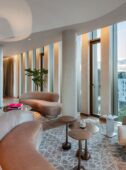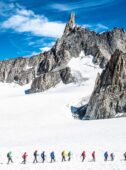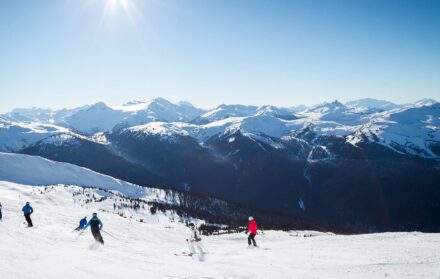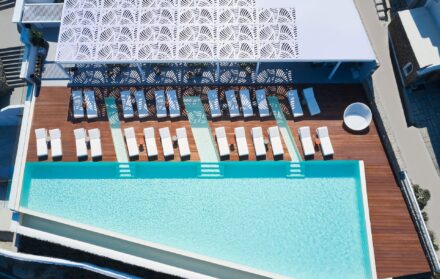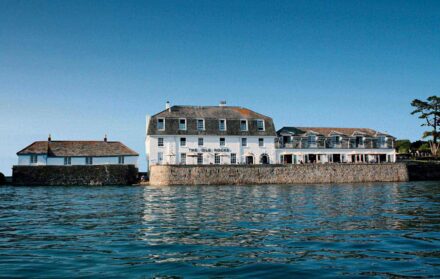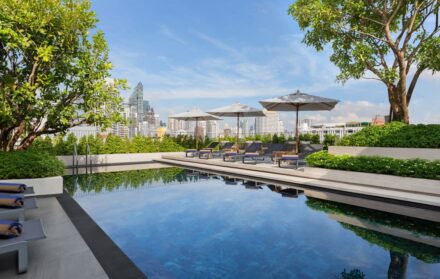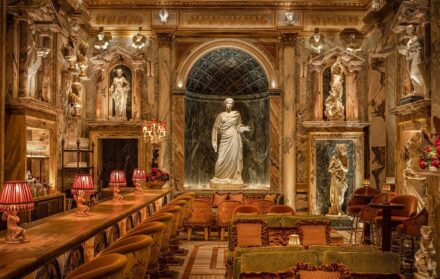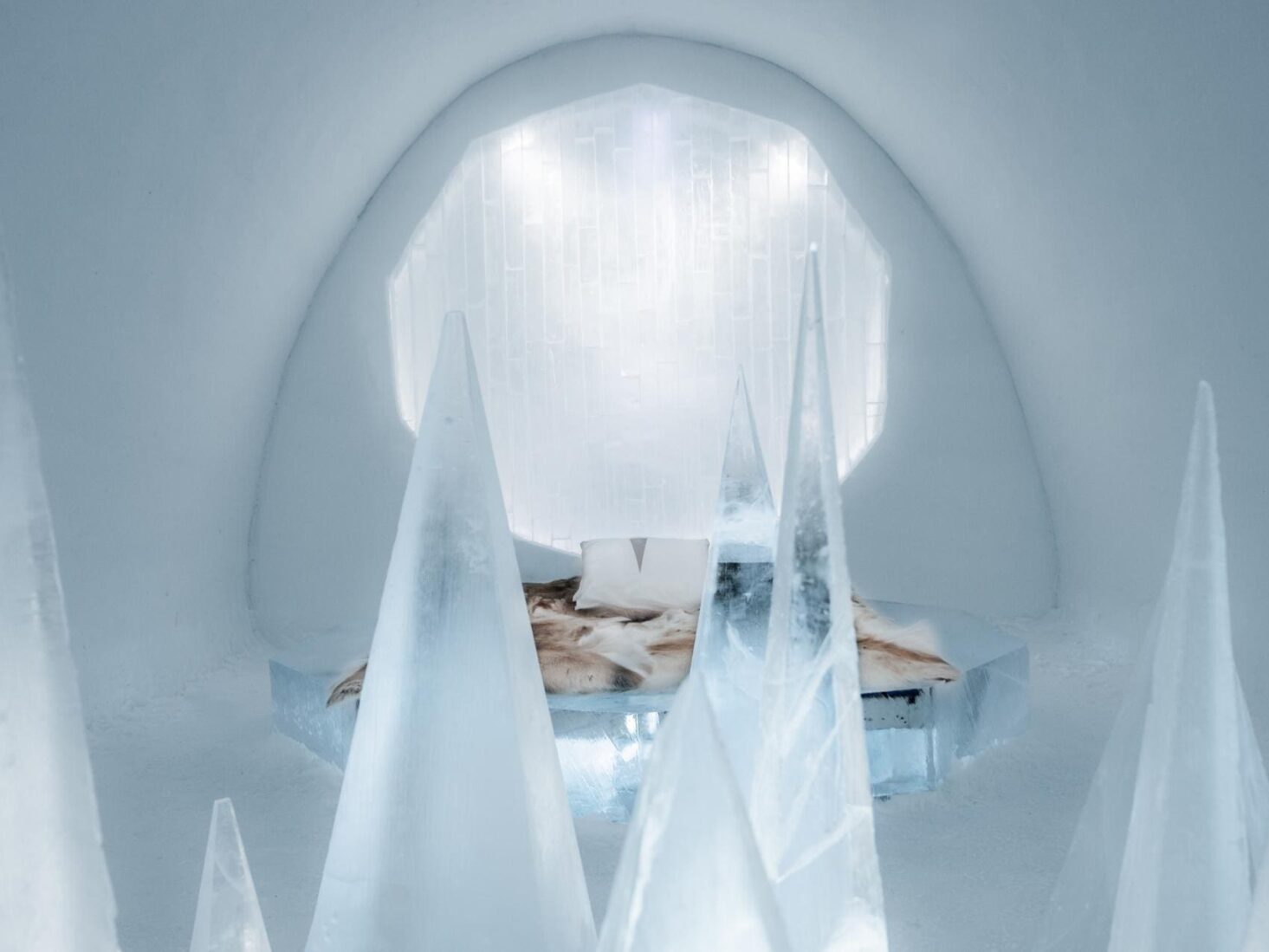
The Icehotel at 30: inside Sweden’s coolest art installation
Thirty years ago, one eccentric Swede conceived a plan to bring the world's tourists to Jukkasjärvi, an unassuming town in Swedish Lapland. The result was the Icehotel, an annual art installation where you can bed down
So small is Jukkasjärvi that it has just one road. Located in Swedish Lapland, the town is 120 miles north of the Arctic Circle and in the winter, when temperatures can drop to as low as -30˚C, it is sparse. Everything is white. Rustic cottages wear coats of snow and branches bow from the weight of icy tips. Even my eyelashes sport snowflake mascara, and as I shuffle along the road my feet leave tell-tale prints behind me.
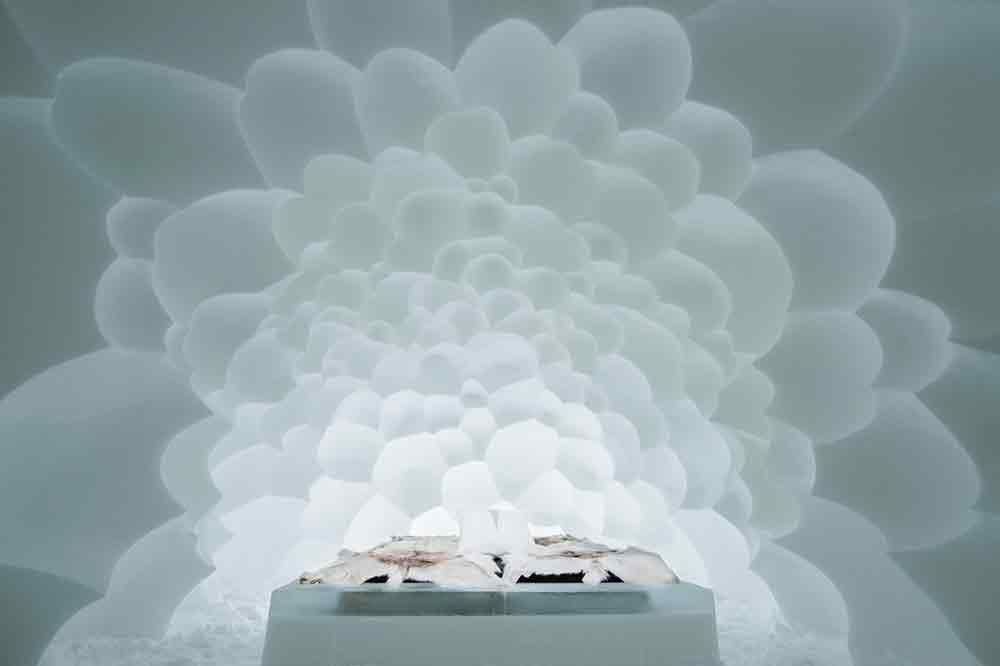
At the end of the highway, the blood red exterior of the local church brings upset to the blank canvas. A veritable Gingerbread House with a scalloped-trim roof, it is the oldest church in the region and has witnessed expansive change to its tiny hometown.
In the 1970s, engineer Yngve Bergqvist, who worked for a local mining company in neighbouring town Kiruna, founded a canoe centre on the banks of Jukkasjärvi’s Torne River. It put the village on the map, attracting more than 5,000 visitors a year – but only for a few months at a time. Come winter, which in Swedish Lapland stretches for five months, Jukkasjärvi would become an arctic desert once again, with the lake transformed into an ice block 60cm thick and strong enough to hold the weight of a car.
It was while on a trip to Japan in 1989 that Bergqvist conceived a way of carving some life into Jukkasjärvi’s winter wasteland. He happened upon two sculptors who crafted brilliant figures out of the very commodity the Arctic Circle produces in abundance: ice. That year, Bergqvist invited the sculptors to host an art workshop in Sweden – and so began the Icehotel.
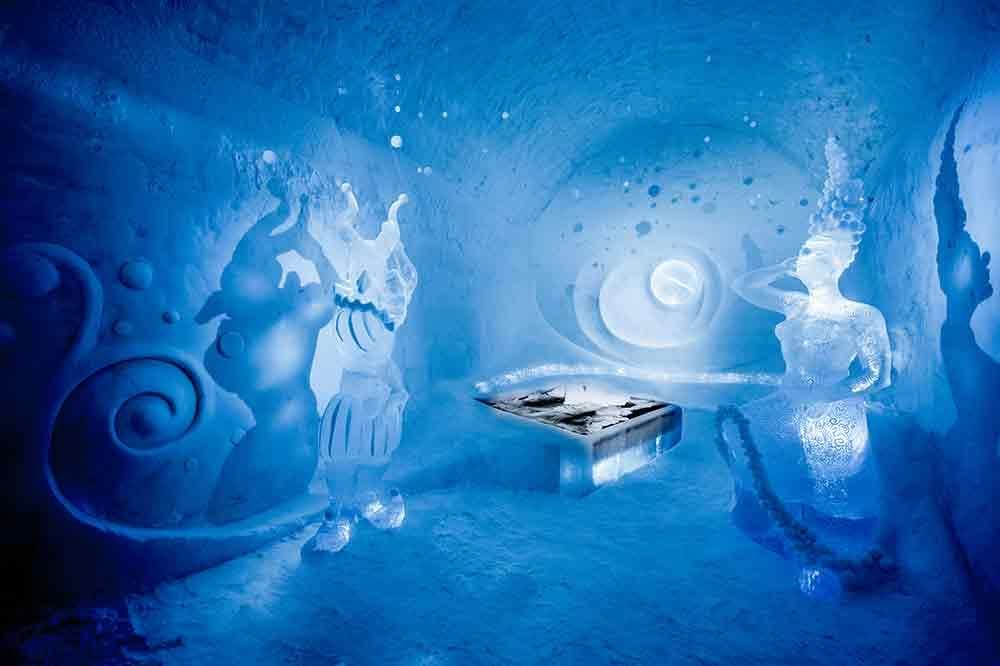
For the next 11 years, the workshops gained traction and a legion of loyal art fans. Such was the furore surrounding the event that in 1992, Arctic Hall, a 250sqm igloo-cum-art gallery, opened on the banks of the Torne. A year later, by chance, the gallery hosted its first overnight visitors – a group of colleagues on a business trip, who found themselves without a place to stay. Armed with sleeping bags and reindeer skins, they bedded down in the igloo and lived to tell the tale.
Today, 50,000 visitors descend on Jukkasjärvi each year to visit what is now known as Icehotel. Crafted from new every November out of 2,000 blocks of ice harvested from the Torne River, the hotel comprises a series of Art Suites – individually designed by different artists each year – and a selection of standard ice rooms. There are also a number of permanent rooms – some of which are en-suite – which are located in Icehotel 365, an all-year round, solar-powered space that you can visit during the warmer months (there’s also an adjoining Ice Bar for cocktails in the rocks).
But it’s the temporary installation that provides the biggest thrill. Each design is unique and more impressive than the next. If you’re willing to brave the -5˚C temperature, you may find yourself snoozing next to a glacial life-sized campervan, below the belly of a whale carved from snow or under the watchful eye of two scarily realistic, and somewhat unnerving, crystalline clowns.
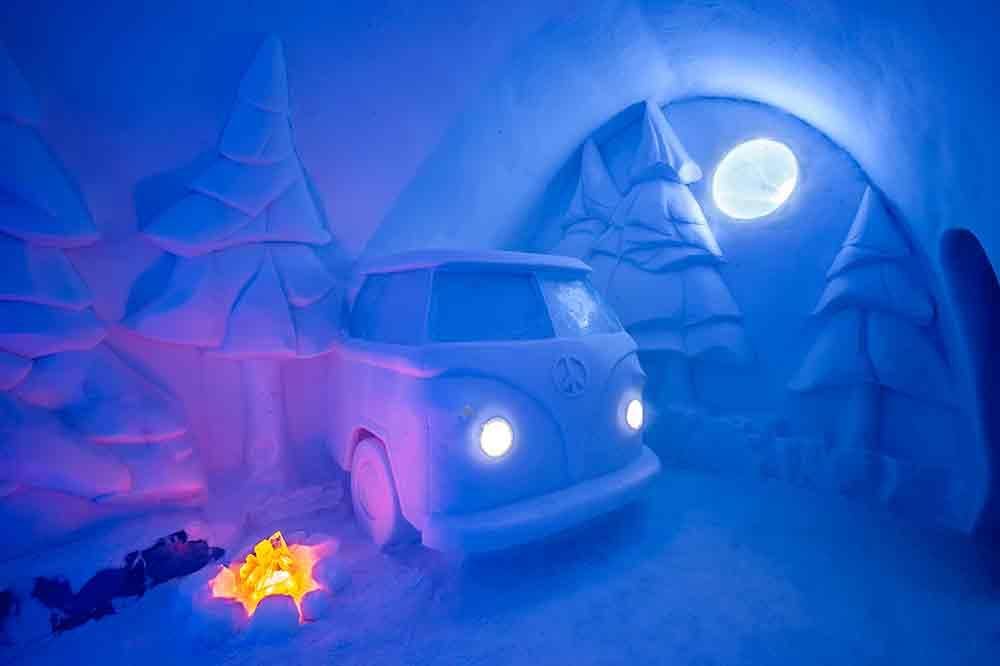
My room is an icicle ode to religion, designed by Spanish architects Josu Gonzalez Ruiz and Emiliano Lorenzo, with cathedral-inspired spires and towering shards that circle the central bed. LED lights omit a purple glow and a chorus of choir singers provide the backing track (which, thankfully, can be turned off when it’s time to catch some shut eye). It is eerie and beautiful at once, the sub-zero-temperatures making it all the more ethereal.
To sleep in such conditions, all you need is one base layer, a pair of socks and a hat. It seems remarkably little, but your own body heat keeps the sleeping bag warm, which is designed to cope with temperatures as low as -30˚C.
Artistry aside, it is, admittedly, not the most relaxing of sleeping quarters. A reindeer skin is all that separates you from your ice block mattress and there are no toilets in the temporary hotel, lest you wish to brave the dash outside to the heated reception building. But there’s a reason Icehotel tops many a bucket list – there is simply no experience quite like it. In 2018, it featured on BBC’s Amazing Hotels: Life Beyond the Lobby, vying with towering Singapore skyscrapers and Moroccan mansions as the best hotel in the world.
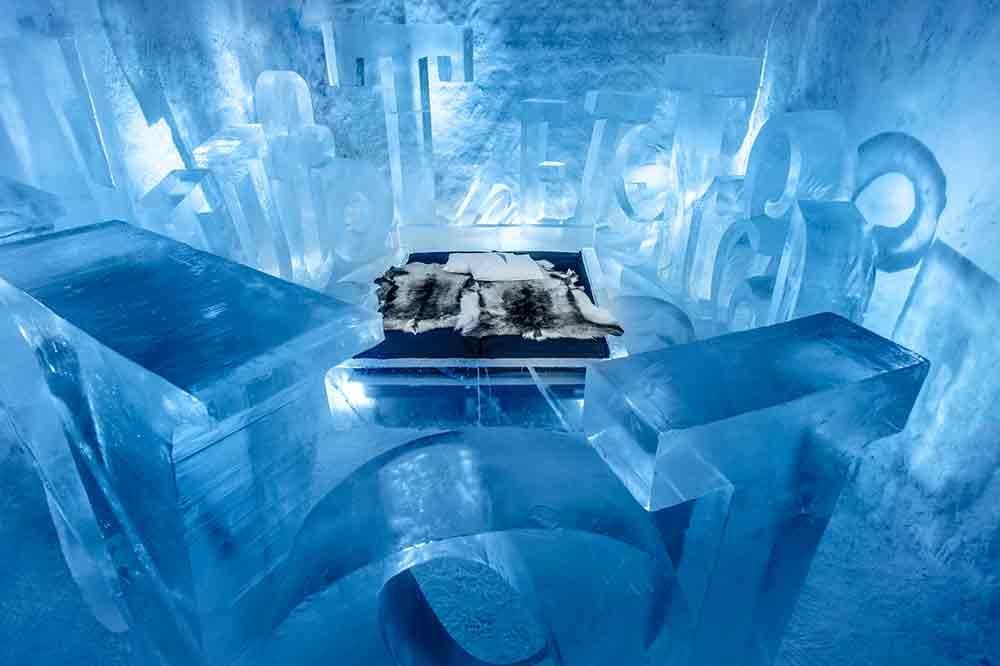
Now in its 30th year, the Icehotel continues to thrive. Such is its success that it is no longer visited for unique sleeping arrangements alone. Bergqvist’s madcap idea provided the catalyst for what is now a winter playground, complete with winter sports that range from husky sledging to a crash course in ice sculpting.
Such conditions require fuel, and while the Lapland environment means local ingredients are limited, Icehotel’s wizard chefs are well-versed in the art of crafting delectable dishes from what’s available. A cross country ski tour across the surface of the lake is paused to devour a feast of sausage and flatbread, roasted over an open fire and enjoyed in a private enclave on the surface of a miniature island, while a snowmobile excursion to scout out the Northern Lights culminates in a belly-warming dinner of moose goulash and blueberry sponge.
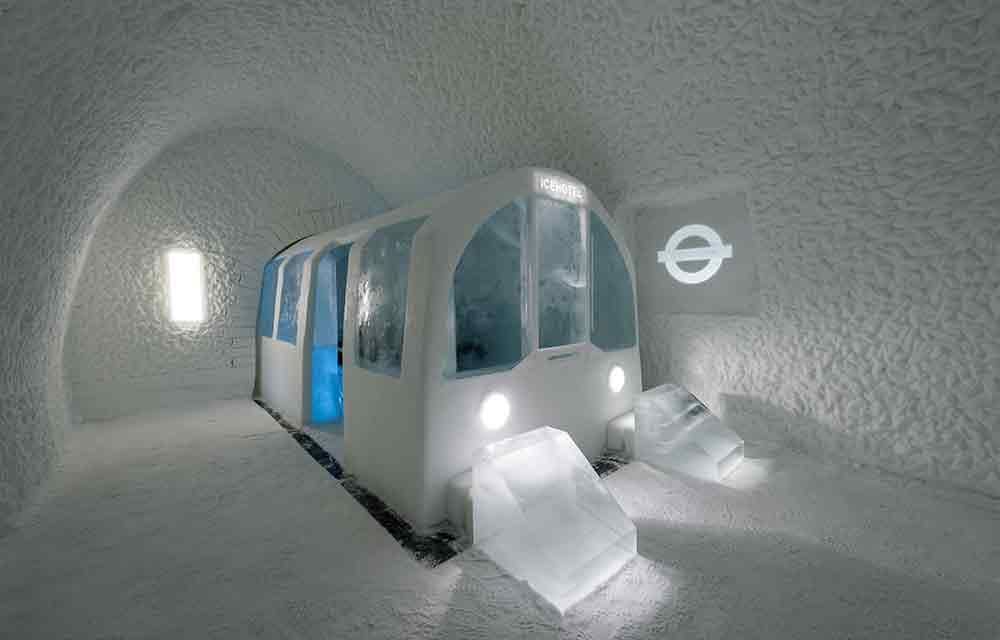
Even a sauna experience comes with charcuterie boards and glasses of wine. Unlike your traditional hot box, a Swedish sauna is a 10-step ritual that takes the body from cold to warm to cold again – and when they say cold, they mean cold. A 20-minute stint in the coal-heated sauna is followed by a snow angel competition in our swimming costumes, and a mad dash back inside for a second sauna hit. Once we’ve reheated, we’re taken down to the river, where a section of the ice has been broken for our dipping pleasure. Plunged into water so cold they have to circulate it to stop it freezing, we then sprint to the outdoor hot tub to recuperate under the stars, a cup of hot lingonberry juice in hand.
Our reward is dinner at the neighbouring Homestead restaurant where buttery mashed potato, Swedish meatballs and tangy lingonberry sauce is heaped high on plates and smothered in gravy. It’s ultimate comfort food, the sort that warms you from the inside out and readies you for a deep sleep – the perfect feast, in fact, to prep you for a night on a mattress made of ice.
A classic three-night Icehotel break is available between December 2019 and March 2020 from £1,046 per person based on two sharing accommodation (two-nights in a warm room and one-night sleeping on ice) on a B&B basis, including return direct flights from London Heathrow to Kiruna, airport transfers, morning sauna and a loan of winter clothing. To book, call 01737 886 131 or visit www.discover-the-world.com
